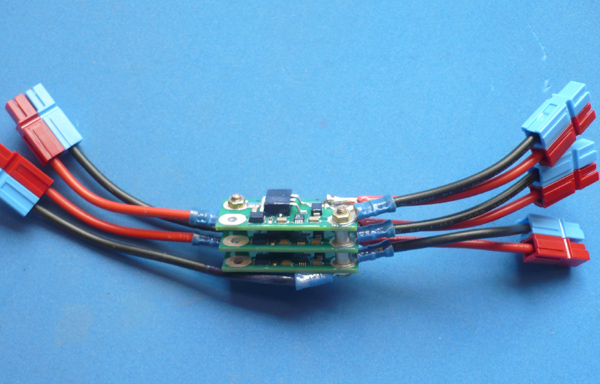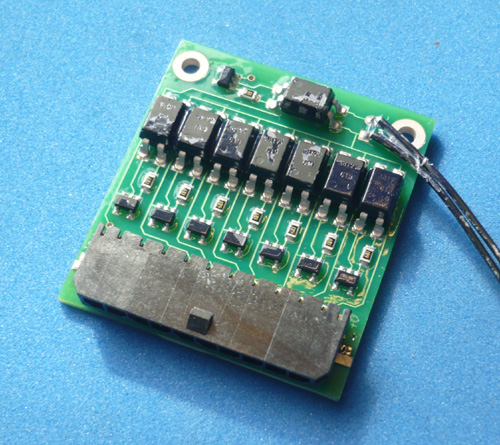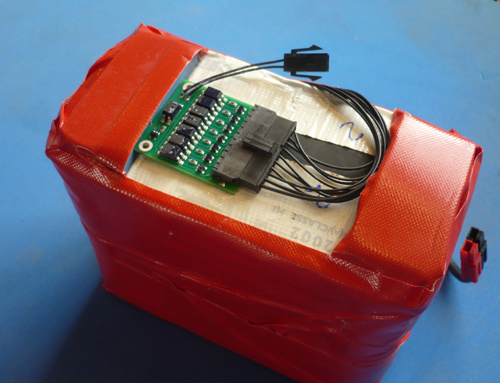Several times on here we have discussed the need to use diodes when combining battery packs in parallel. There are circumstances when this is not necessary, for instance if the packs are always connected and charged and discharged together, or if there is already the right circuitry built into the pack.
But if the packs are used separately, or if they are different chemistries, then diodes are needed to stop cross currents flowing when the packs are connected. The standard things to use are Schottky diodes, which have a smaller voltage drop than ordinary ones. But a Schottky can still have a drop of about half a volt at high current, which means that at 10 A it will dissipate 5 W, at 20 A it will dissipate 10 W. So you need to mount them on a heatsink.
An ideal diode is one that does not have a forward voltage drop and therefore waste power when carrying a forward current.
Anyway, I recently built some:
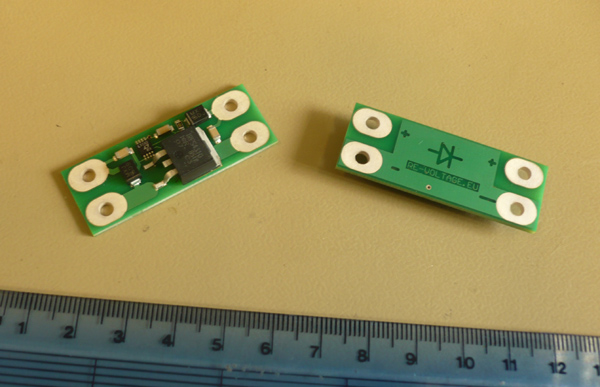
This is a little surface mount board with a FET with a control circuit. When the voltages are the right way round the FET turns on. Otherwise the FET is off.
I've set it up so the connections can be made by various ways, such as soldering, or by bolting on terminals
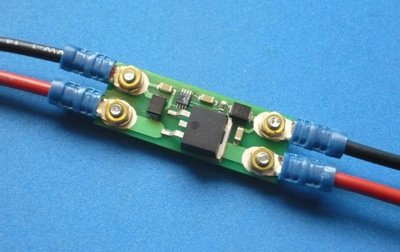
The spacing is also right for Anderson PowerPole connectors
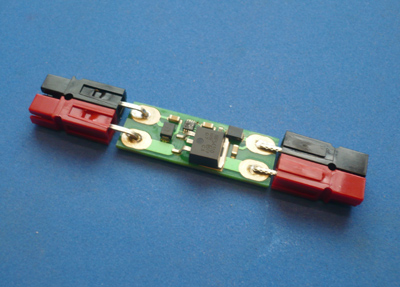
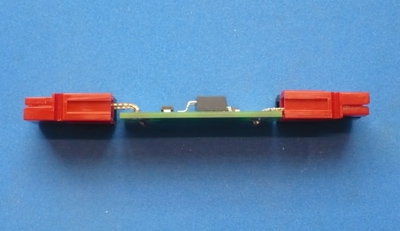
These are designed to operate up to 80 V. I've put 100 V surge suppressors on each end in case of inrush sparks when connecting and disconnecting.
The max current is set by the FET characteristics. The peak pulse current could go as high as 120 A, but the continuous current is less. I've run these in the lab at 20 A continuous without a heatsink, but if they were buried away without ventilation I would derate them to 15 A.
The current drain is about 1.5 mA.
Nick
But if the packs are used separately, or if they are different chemistries, then diodes are needed to stop cross currents flowing when the packs are connected. The standard things to use are Schottky diodes, which have a smaller voltage drop than ordinary ones. But a Schottky can still have a drop of about half a volt at high current, which means that at 10 A it will dissipate 5 W, at 20 A it will dissipate 10 W. So you need to mount them on a heatsink.
An ideal diode is one that does not have a forward voltage drop and therefore waste power when carrying a forward current.
Anyway, I recently built some:

This is a little surface mount board with a FET with a control circuit. When the voltages are the right way round the FET turns on. Otherwise the FET is off.
I've set it up so the connections can be made by various ways, such as soldering, or by bolting on terminals

The spacing is also right for Anderson PowerPole connectors


These are designed to operate up to 80 V. I've put 100 V surge suppressors on each end in case of inrush sparks when connecting and disconnecting.
The max current is set by the FET characteristics. The peak pulse current could go as high as 120 A, but the continuous current is less. I've run these in the lab at 20 A continuous without a heatsink, but if they were buried away without ventilation I would derate them to 15 A.
The current drain is about 1.5 mA.
Nick


